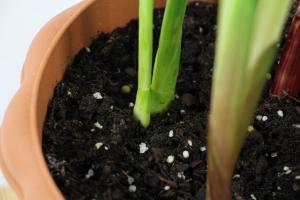How to Arrange Outdoor Plants in Pots
Outdoor plants add a touch of natural beauty to any space. However, their placement can affect their growth and overall appearance. To make the most of your outdoor plants in pots, follow these tips for arranging them in an aesthetically pleasing and healthy manner.
Choose the Right Containers
Firstly, select the appropriate containers for your outdoor plants. Be sure to consider the size of the plant and its root system when choosing the container size. A pot that is too small will restrict the plant’s growth, while a pot that is too large may hold too much water and cause root rot.
The container should also have drainage holes to prevent water from sitting in the soil and causing root damage. Additionally, make sure the container material is suitable for your plant's needs. Porous materials like terracotta are great for plants that need good drainage, while plastic containers can retain moisture for plants that require more water.
Choose Complementary Plants
When arranging outdoor plants in pots, it's important to choose complementary plants that will thrive in the same growing conditions. Plants with similar water and sun requirements are ideal. Additionally, consider the color and texture of the plants to create an aesthetically pleasing container garden.
For instance, combining different shades of green with different leaf shapes and textures can create a visual interest in your garden. Similarly, pairing contrasting colors like yellow and purple can create a beautiful and vibrant look.
Consider the Plant Height and Placement
When placing plants in pots, always consider the height of the plants. Place taller plants closer to the center or back of the arrangement, while shorter plants should be at the front or lower part of the container.
This helps to create a visually appealing and balanced container garden. It also ensures each plant receives adequate sunlight and doesn't overshadow another.
Use Soil and Fertilizer Appropriately
The type of soil and fertilizer used in your container garden can directly affect the health of your plants. Use a good quality potting mix that provides good drainage and nutrients.
Additionally, choose a fertilizer that works best for your plants. A slow-release fertilizer can provide consistent nutrients to your plants over time, while a water-soluble one can add an instant boost of nutrients to the soil.
Regularly Maintain and Prune the Plants
Proper maintenance and pruning of your outdoor plants are crucial for their health and longevity. Regularly check the soil to determine if it's time to water your plants, and prune the plants regularly to remove dead or damaged leaves and stems.
Also, keep an eye out for pest infestations, and treat them promptly to prevent damage to the plant. All this ensures that your container garden thrives and remains beautiful for as long as possible.
Conclusion
Arranging outdoor plants in pots requires some planning and creativity. By selecting appropriate containers, complementary plants, proper placement, and regular maintenance, you can create a beautiful and healthy container garden.
So, get creative, and enjoy the process of creating a beautiful outdoor space with potted plants.

 how many times do yo...
how many times do yo... how many planted tre...
how many planted tre... how many pine trees ...
how many pine trees ... how many pecan trees...
how many pecan trees... how many plants comp...
how many plants comp... how many plants can ...
how many plants can ... how many plants and ...
how many plants and ... how many pepper plan...
how many pepper plan...




























